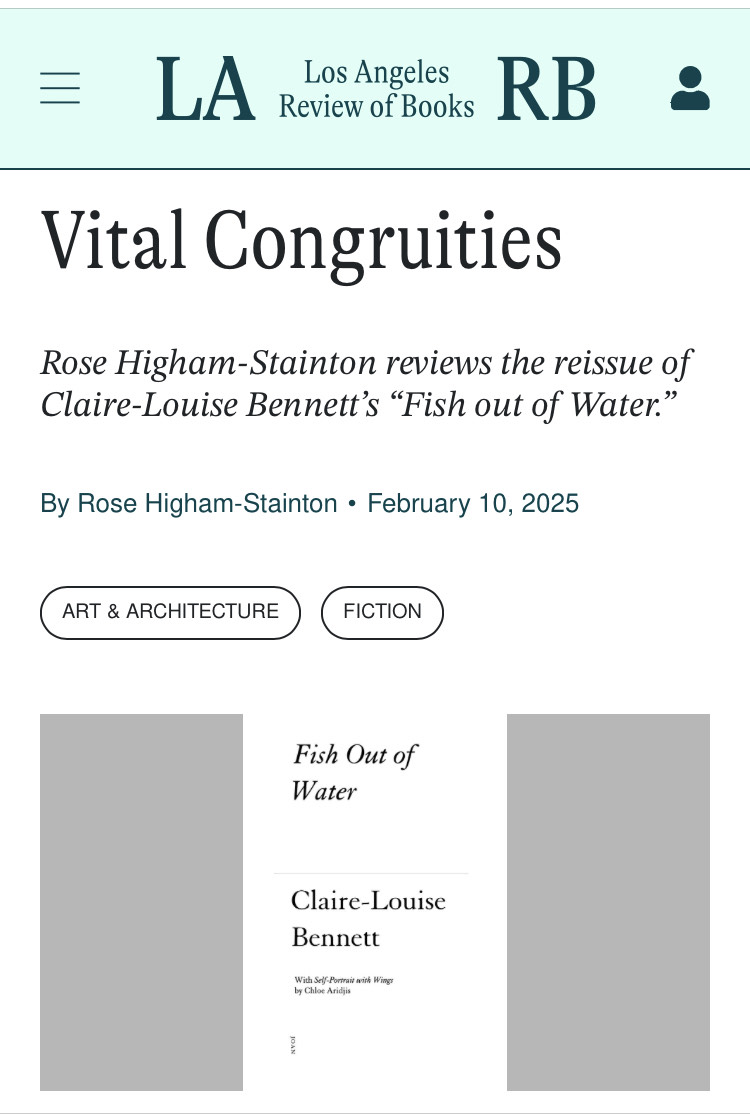**************
**************
Susan Finlay on the books that have influenced her, in Frieze ︎
*********************
*******
*******
![]()
*******
**************
Susan Finlay on the books that have influenced her, in Frieze ︎
![]()
To celebrate the recent release of The Lives of Artists, artist and writer Susan Finlay shares a reading list for frieze, consisting of works that have left a lasting impression on her practice and continue to influence her approach to the art of writing.
I describe myself as an ‘artist who writes’ for two reasons. One, my background is in the visual arts, and I still make (although rarely show) paintings. Two, objects and images are the means through which I tell stories. In the art world, it’s a given that the artist takes inspiration from all sorts of sources outside of their own medium, whereas in the literary world it’s not. To me, this is a stupid way to behave. We don’t read books the way people in the 19th century did because we have television and the internet. I want my work to reflect the fragmented, visually saturated world we live in, and perhaps unsurprisingly I’m drawn to authors who share these concerns.
*******
Review of Emma Bolland's Instructions From Light by Adam Piette in Blackbox Manifold ︎
"Emma Bolland’s reimagining of Delluc’s screenplay has generated a wonderfully bristling and febrile text, subtly theorised, culturally agile with its feminist energies drawing together fields of thought and practice as lode for a sharp and telling reflection on the razzle-dazzle of film and fictocritical hybrid writing, drawing us into the perilous zone of our consumerist gaze on art, and inviting us to think deeply on what she has called present-traumatic experiences that we should not be feeding so heartily on."
*********************
*******
*******
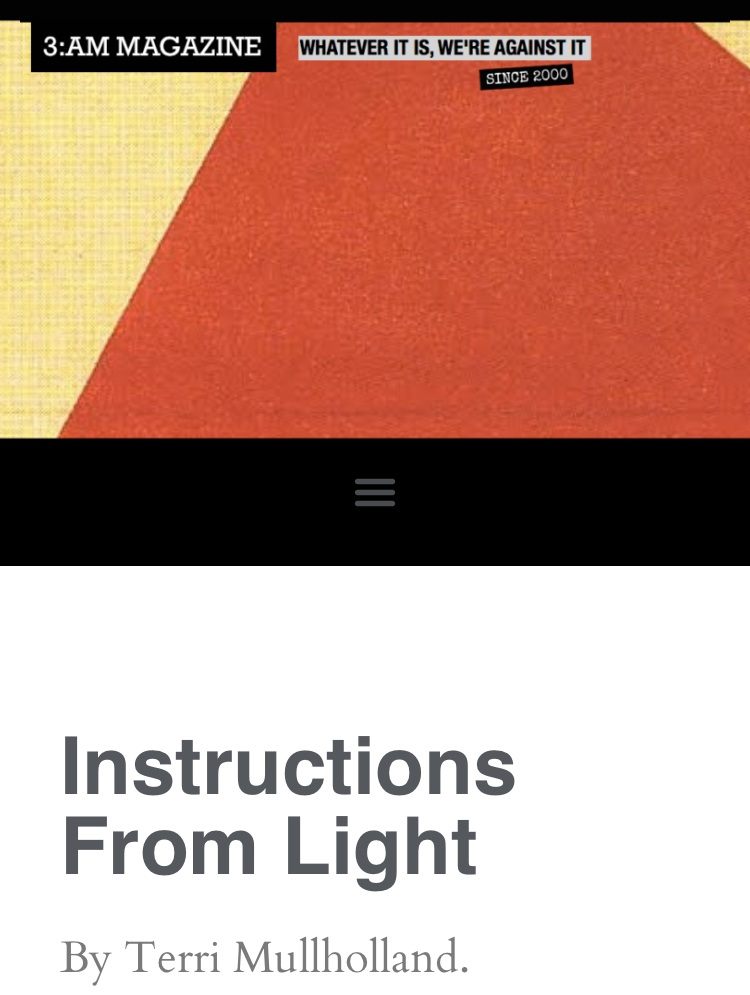
*******
Extract from Instructions from Light by Emma Bolland in Mercurius Magazine ︎
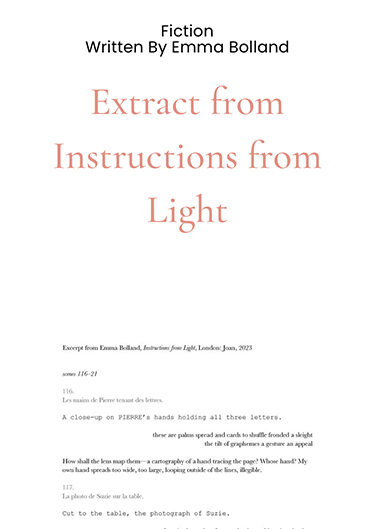
*******
Bella Marrin responds to an event at Café Oto, London celebrating Blue Monday by Zara Joan Miller ︎
![]()
Yesterday I watched Blue Monday performed as a dialogue between voice and cello by Zara Joan Miller and Ute Kanngiesser. A series of images shown on a 35mm slide projector triangulated this conversation, and the darkness of the room protected us all from the terrible blueness of a January afternoon. Images of scarecrows in smiling fields flash by slowly as the solidity of the projector’s mechanism creates a soft thunk against which the sound of the cello is a knife’s edge, the bow moving across a cluster of nerve endings, somehow this unpeeling feels good.
I love it when / the outside gets in
*******
Sam Cottington’s People Person chosen as a book of the year by Hannah Regel in the White Review ︎
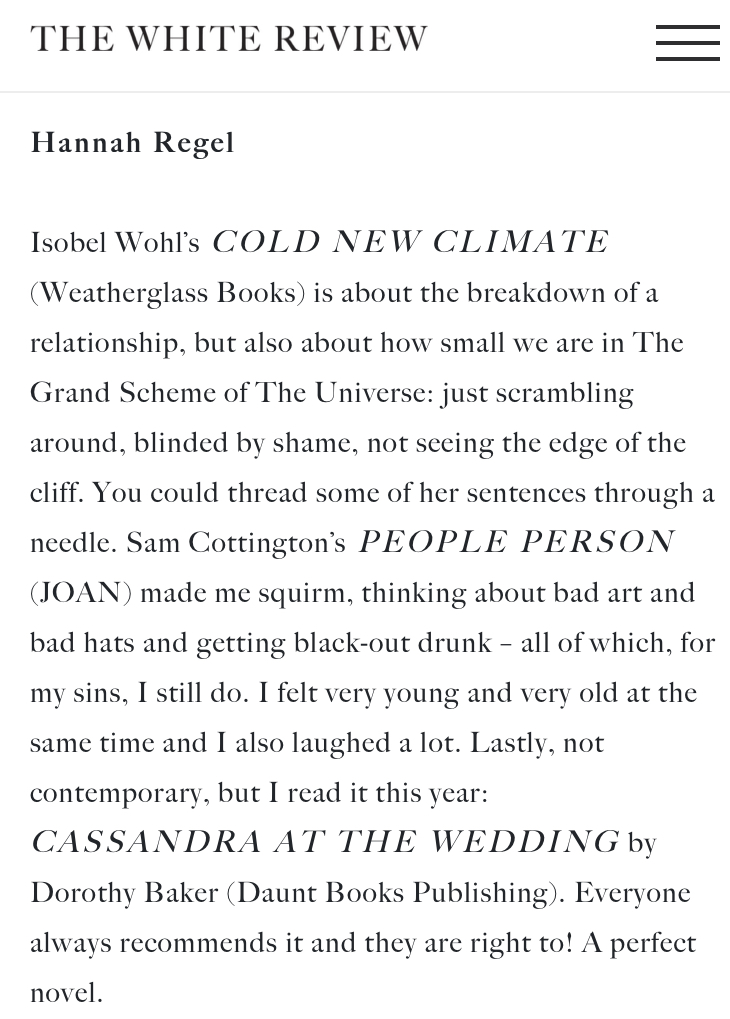
Sam Cottington’s PEOPLE PERSON (JOAN) made me squirm, thinking about bad art and bad hats and getting black-out drunk – all of which, for my sins, I still do. I felt very young and very old at the same time and I also laughed a lot.
*******
Caitlin Merrett King on Sam Cottington’s People Person in MAP magazine ︎

‘Partially trying to be artists, or at least figuring out how you might be one, People Person and their friends hold temp jobs and gig-work. The book carries that prevailing feeling of the impermanence of being in your 20s, like it’s some kind of anti-chamber to life where everything stands still whilst shaking furiously. People Person and their friends are both complicit insiders and weary outsiders in ‘the scene’ that they orbit, and they want to feel something and nothing: ‘we brushed the feelings of incredulity off our bodies’. But really People Person is all about trying to figure out what’s next, suffering the pressure to have fun, be productive, do it all, trying to conjure any and all affective experience whilst experiencing ‘the same things over and over again’—an effort that is hilariously exemplified, pulled out from the bottom of People Person’s bag, at the novel’s denouement.
’
*******
‘Artist Paul Becker’s novella-of-sorts, How We Made ‘The Kick Inside’ (2022), proposes itself as an account of the making of Bush’s first album in 1978. Here is a Bush who quotes Ukrainian-Brazilian novelist Clarice Lispector, wants to record floorboards and the insides of studio walls, and gets lost inside a huge model of herself, built for a video shoot. A Bush who comments, all considerations of process and technology aside, on the essence of her art: ‘Nestling right at the core, at the beating heart of that record, is something wholly illusive, intangible, fugitive that I am still completely unable to tie any kind of defining label on. I just knew it was right. I knew I was right.’
Brian Dillon in Freize, Oct 2022
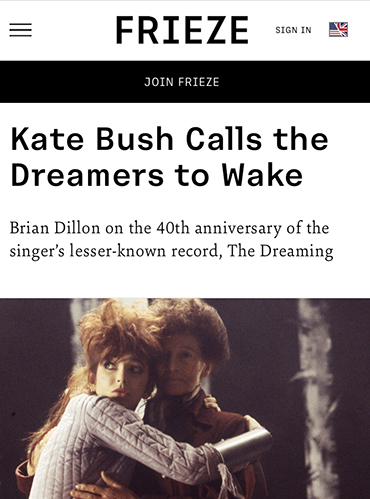
*******
Review of Paul Becker’s How We Made ‘The Kick Inside’ by Dan Fox, on his substack ‘Keep All Your Friends’ ︎

*******
Review of Lucie McLaughlin’s Suppose a Collapse in Spam Zine ︎
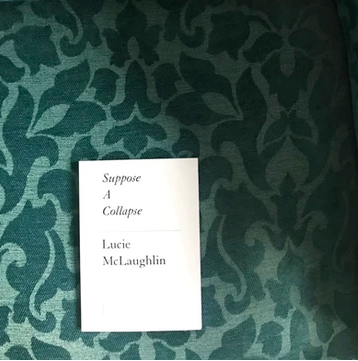
*******
Review of Suppose A Collapse in Friday Critique. Queen’s University Belfast, Seamus Heaney Centre ︎
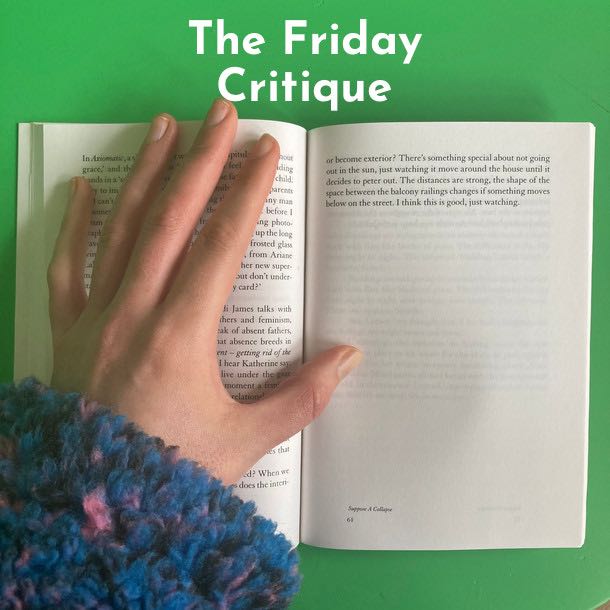
Suppose A Collapse, by Lucie McLaughlin by Tiegan Johnston
“It was otherworldly from the beginning”, the opening line of Lucie McLaughin’s mixed-media book encapsulates not only the speakers experience of oscillating between two entirely different cities but also the experience of reading this work.
Suppose A Collapse follows an unnamed speaker between Belfast and Madrid, where she meditates on her relationship with her mother, absent father and extended family. Fluid, perplexing and indefinable – this piece resists interpretation. McLaughlin’s writing is controlled, considered and poignant as she takes the reader on a journey, moving not only spatially, but through memoir, prose and poetry. The voice remains strong and confident, as it battles with definitions of the self: “Successful immersion means the body isn’t knowable, or someone that you know”. The stream of consciousness is vividly constructed throughout the text, as it moves from solid blocks of prose to deconstructed lines floating across the page: “It hurts, I said. It’s like the storm in my head broke the thunder directly above my flat, the lightning half a second before.”
In contrast to this, McLaughlin’s writing is also incredibly plainspoken and to the point; she references art, literature and film, reviewing it for the reader with great depth and precision. And this seems like a trick to divert the reader – a performance arranged to obscure the depth of emotional exploration that’s at the core of this book: “I am directing a performance for all the people of my life.”
Art is how the speaker attempts to make sense of her world, of that which is absent, and in the same way this text is a guide for readers who feel a lack in theirs. And this is apt, as absence, what is not discussed or cannot be, is the hinge of Suppose A Collapse as it ponders: “Maybe art is the place to become obsessed with lack, with absence.”
© Joan Publishing
